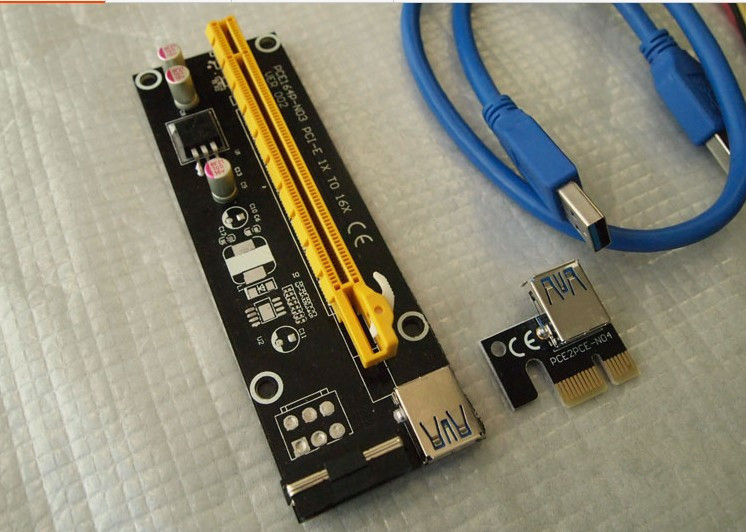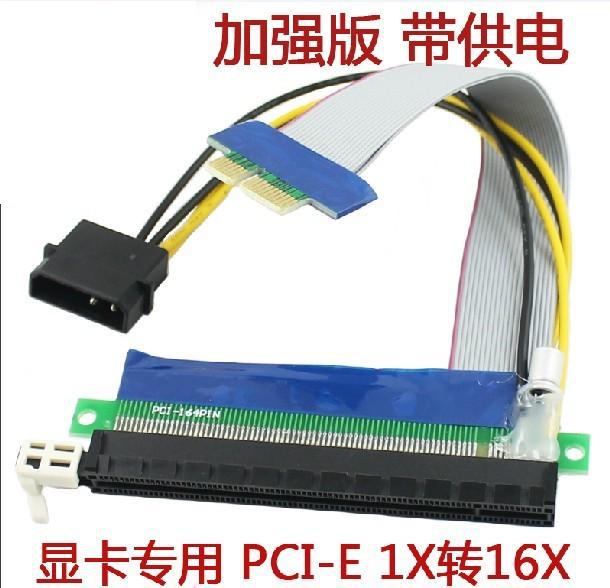 |
| Powered and pin shorted |
BIOS Settings - The fickle mistress, there are lots of settings in here that can trip you up. Some key things that need to be set here, make sure your PCIe cards are set to run as Gen 2.0 not auto. Gen 2.0 is the most likely config that your extenders will work with. On some motherboards there are a limited number of systems that can be run simultaneously and some periferals will take priority over your PCIe 1x slots. To fix this, you need to disable these extra periferals. As a last resort, disable the USB 3.0 driver and the SATA driver. I managed to get my system working with both of these on however.
 |
| Powered |
 |
| Unpowerd |
Default Graphics Output - /u/arthropal pointed out that "motherboards will usually initialize whatever is in the top slot as the active console card, so if they have an extender on a top slot that's 1x, and they are trying to see output on the card in the top full sized slot, which is below that 1x slot, they will get black screen and seemingly no boot." To overcome this issue, make sure to fix the default graphics card selected in your BIOS settings.
Integrated Graphics Cards - On some motherboards you have integrated graphics cards. Depending on your OS, these graphics cards will fight for control of the video output with your plugged in PCIe GPU. I've had this trouble on Ubuntu and I had to specifically force both BIOS and Ubuntu to use the integrated graphics card, leaving my GPUs for mining only. Forcing integrated graphics in BIOS only is not enough.
OS Issues - There are some OS specific limitations to getting multiple GPUs to work but usually it's only after you've plugged in 6 or more GPUs. If you only plug in your powered riser and remove all other other cards and it doesn't work, it's probably not an OS issue.
No comments:
Post a Comment